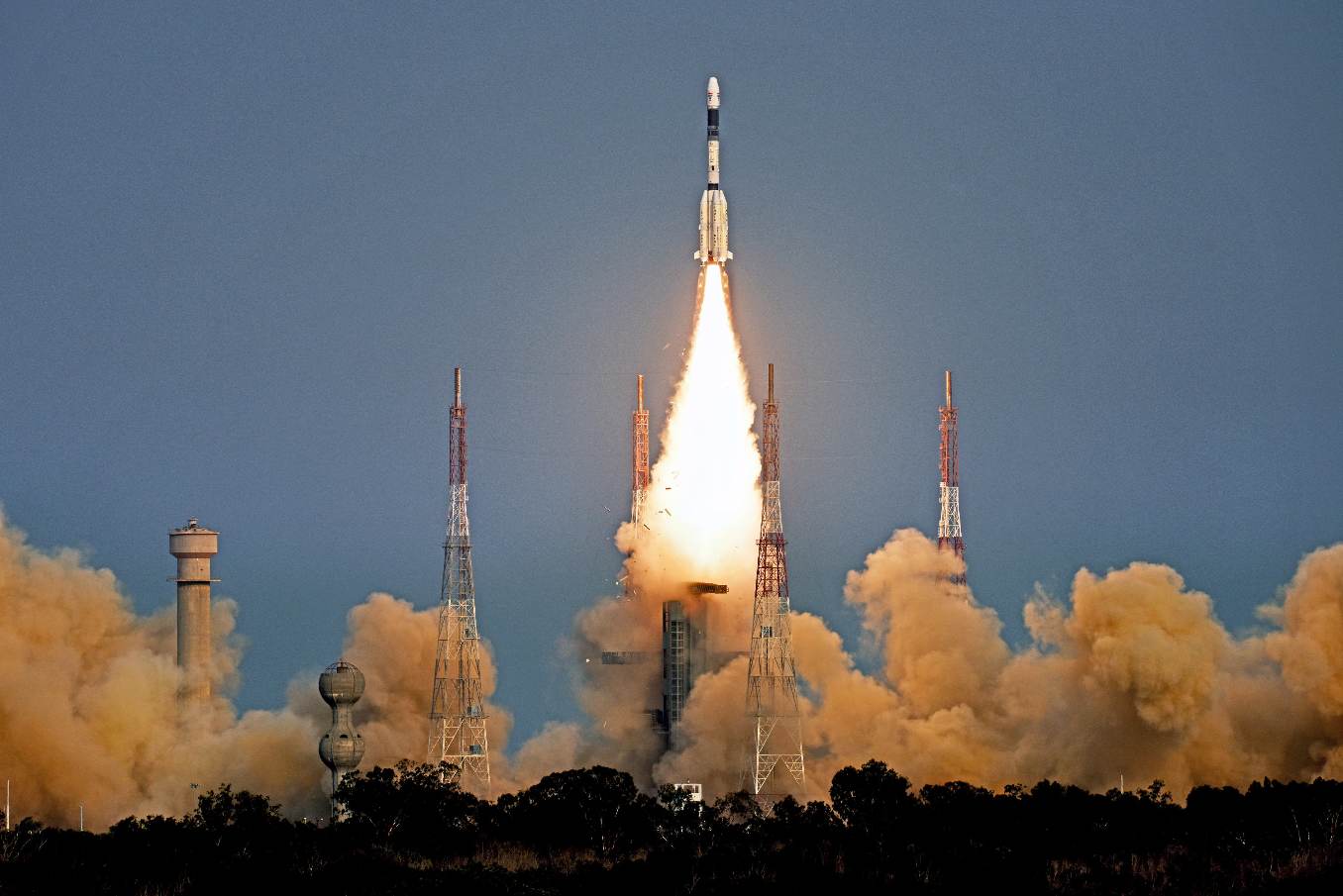For its twelfth mission, India's Geosynchronous Satellite Launch Vehicle (GSLV-F08) successfully launched the GSAT-6A satellite on 29th March.
India's Geosynchronous Satellite Launch Vehicle (GSLV-F08) successfully launched the GSAT-6A satellite into Geosynchronous Transfer Orbit (GTO) on 29th March 2018. The launch, the twelfth for GSLV, took place from the Second Launch Pad at Satish Dhawan Space Centre (SDSC) SHAR, Sriharikota.
It was the fifth consecutive success achieved by GSLV carrying the indigenously developed Cryogenic Upper Stage. India has an ambitious target of up to 17 launches this year, including seven GSLV missions.
GSLV lifted off at 16:56 IST, as scheduled, and GSAT-6A was successfully placed in GTO about seventeen and a half minutes later. Soon after separation from GSLV, the two solar arrays of GSAT-6A were automatically deployed in quick succession and the Master Control Facility (MCF) at Hassan in Karnataka assumed control of the satellite.
The initial GTO featured a perigee of 169.4km and an apogee of 36,692.5km with an orbital inclination of 20.64° with respect to the equator.
GSAT-6A is a communication satellite built by ISRO to provide mobile communication services through multi-beam coverage. For this, it is equipped with S and C band transponders.
GSAT-6A, like GSAT-6, is a high-power S-band communication satellite configured around an I-2K bus. The mission life of the spacecraft is about 10 years. The satellite will also provide a platform for developing technologies such as a demonstration of a 6m S-Band Unfurlable Antenna, handheld ground terminals and network management techniques that could be useful in satellite-based mobile communication applications.

